Global Trends in the Incidence, Prevalence, and Years Lived With Disability of Parkinson's Disease in 204 Countries/Territories From 1990 to 2019
- PMID: 34950630
- PMCID: PMC8688697
- DOI: 10.3389/fpubh.2021.776847
Global Trends in the Incidence, Prevalence, and Years Lived With Disability of Parkinson's Disease in 204 Countries/Territories From 1990 to 2019
Abstract
Background: Parkinson's disease (PD) is an increasing challenge to public health. Tracking the temporal trends of PD burden would inform health strategies. Methods: Data of PD burden was obtained from the Global Burden of Disease 2019. Trends in the incidence, prevalence, and years lived with disability (YLDs) of PD were estimated using the annual percentage change (EAPC) and age-standardized rate (ASR) from 1990 to 2019. The EAPCs were calculated with ASR through a linear regression model. Results: The overall ASR of the incidence, prevalence, and YLDs of PD increased from 1990 to 2019, and their EAPCs were 0.61 (95% confidence interval [CI]: 0.58-0.65), 0.52 (95% CI: 0.43-0.61), and 0.53 (95% CI: 0.44-0.62). The largest number of PD patients was seen in the groups aged more than 65 years, and the percentage rapidly increased in the population aged more than 80 years. Upward trends in the ASR of PD were observed in most settings over the past 30 years. Incident trends of ASR increased pronouncedly in the United States of America and Norway, in which the respective EAPCs were 2.87 (95% CI: 2.35-3.38) and 2.14 (95% CI: 2.00-2.29). Additionally, the largest increasing trends for prevalence and YLDs were seen in Norway, with the respective EAPCs of 2.63 (95% CI: 2.43-2.83) and 2.61 (95% CI: 2.41-2.80). However, decreasing trends in PD appeared in about 30 countries, particularly Italy and the Republic of Moldova. Conclusions: Increasing trends in the burden of PD were observed globally, and in most regions and countries from 1990 to 2019. Our findings suggested that the control and management of PD should be strengthened, especially when considering the aging tendency of the population.
Keywords: Parkinson's disease; age-standardized rate; estimated annual percentage change; global burden of disease; years lived with disability.
Copyright © 2021 Ou, Pan, Tang, Duan, Yu, Nong and Wang.
Conflict of interest statement
The authors declare that the research was conducted in the absence of any commercial or financial relationships that could be construed as a potential conflict of interest.
Figures


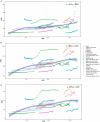
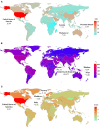
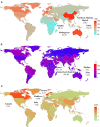
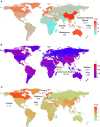
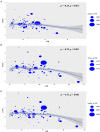
References
-
- GBD Disease Incidence, Prevalence Collaborators. Global, regional, and national incidence, prevalence, and years lived with disability for 354 diseases and injuries for 195 countries and territories, 1990-2017: a systematic analysis for the Global Burden of Disease Study 2017. Lancet. (2018) 392:1789–858. 10.1016/S0140-6736(18)32279-7 - DOI - PMC - PubMed
Publication types
MeSH terms
LinkOut - more resources
Full Text Sources
Medical
Miscellaneous

